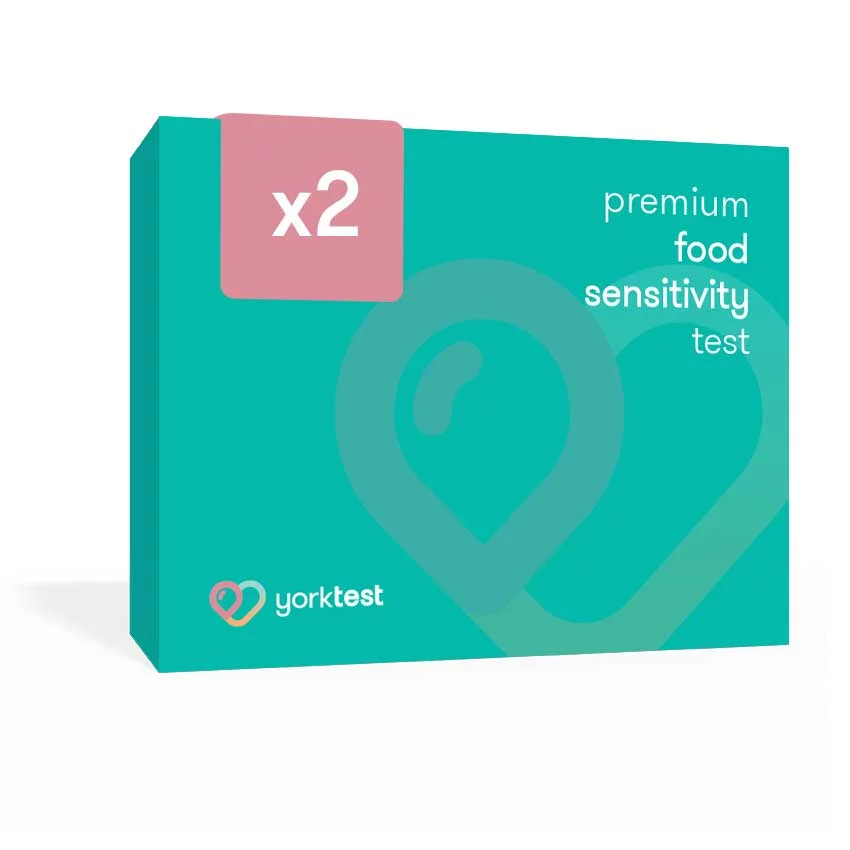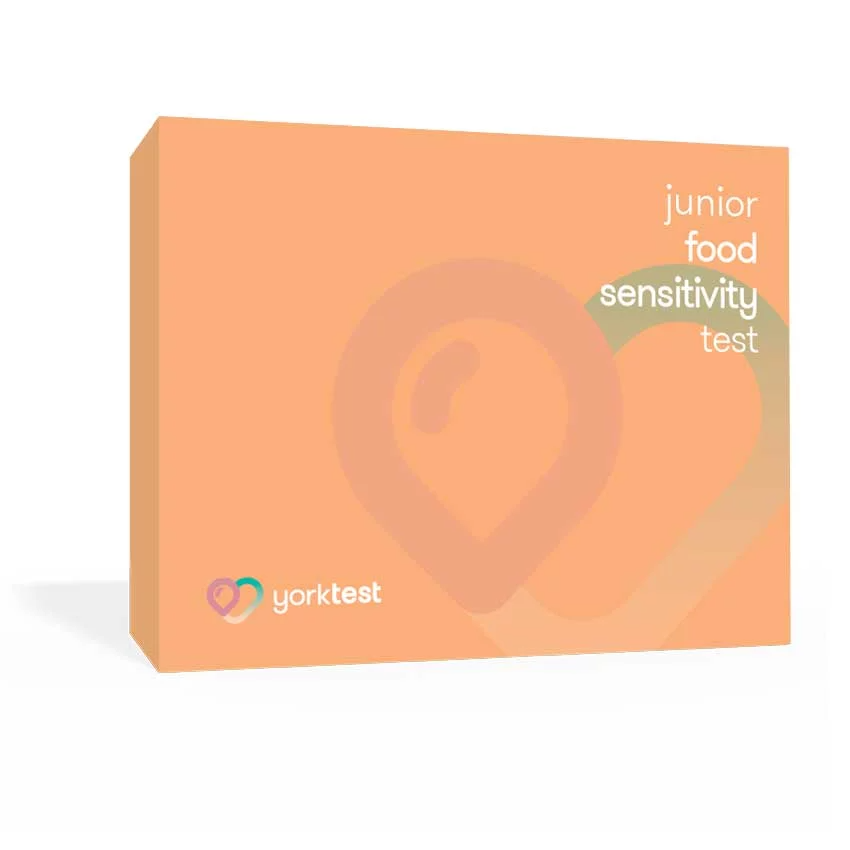
What Does 'May Contain' Mean?
- What Does ‘May Contain‘ Mean?
- Why is it so Important?
- What Does ‘May Contain Traces’ Mean? Is It Different To May Contain?
- What Are the Dangers of ‘May Contain’?
- Fear of an Allergic Reaction
- Cause of Anxiety
- Inconsistent Risk Levels
- Could Be Missed
- Not Legally Binding
- Common Foods and ‘May Contain’ Warnings
- Nuts
- Gluten
- Milk
- Eggs
- Soya
- Sesame
- How to Manage ‘May Contain’ Foods
- Read Labels Carefully
- Avoidance Is Often Best
- Contact Manufacturers For Clarity
- Ensure Your Food Allergies and Intolerances Are In Check With YorkTest
For anyone living with allergies or food intolerances, the phrase ‘may contain’ can spark real fear and uncertainty. Not knowing what hidden ingredients might be in the food you’re about to eat is unsettling, and with this warning appearing on more and more packaging, it’s a concern that many people now share.
It’s natural to wonder: what does ‘may contain’ actually mean? Is it simply a cautious label, or does it signal a genuine risk of a serious reaction? When a few words on packaging could be the difference between enjoying a meal and experiencing a dangerous allergic response, clarity is essential.
In simple terms, ‘may contain’ refers to the chance that a product has been exposed to allergens during the manufacturing process, even if those allergens aren’t listed as ingredients. But does that mean it’s unsafe, or is it just a precaution? In this blog, we’ll break down what ‘may contain’ really means and what it could mean for your health.
What Does ‘May Contain‘ Mean?
‘May contain’ on a food product indicates that there could unintentionally be traces of an allergen due to cross-contamination during manufacturing, even though the allergen isn’t a listed ingredient.
It’s part of what’s known as precautionary allergen labelling (PAL), designed to warn consumers. However, it doesn’t specify how likely contamination is or how much of the allergen might be present. For people with severe allergies, even the smallest amounts can be enough to cause a reaction, which is why these warnings should always be taken seriously.
In most cases, ‘may contain’ means the product has been made in the same facility or on the same equipment as foods containing allergens such as nuts, milk, or gluten. While the allergen hasn’t been deliberately added to the recipe, the risk of cross-contact can’t be completely ruled out.
Why is it so Important?
For people living with allergies, ‘may contain’ labels play a vital role in staying safe. Even tiny traces of an allergen can trigger serious reactions, which makes these warnings especially important for those with severe sensitivities. Including this information on packaging is part of wider food safety practices designed to prevent accidental exposure, which in the most extreme cases could be life-threatening.
From a manufacturer’s perspective, these labels are a way of being transparent and responsible. They highlight potential risks from cross-contamination, even if the allergen hasn’t been deliberately added. This allows people with allergies to make more informed and safer food choices.
What Does ‘May Contain Traces’ Mean? Is It Different To May Contain?
‘May contain’ and ‘may contain traces’ are often used interchangeably, and they are not inherently different. Both indicate a risk of accidental cross-contamination of allergens due to the way the food product was made.
The word ‘traces’ doesn’t imply a lower level of risk. It simply signals that very small, unintended amounts of an allergen could be present because of shared equipment or processes. Since both phrases are voluntary and not legally standardised, anyone with a severe allergy should treat them with caution and, if in doubt, contact the manufacturer for clarification.
What Are the Dangers of ‘May Contain’?
Fear of an Allergic Reaction
The most obvious danger is the risk of a severe reaction if someone with allergies accidentally consumes a food containing traces of an allergen.
Cause of Anxiety
Because the ‘may contain’ label highlights a slim chance of a reaction, it can create significant anxiety. Unlike clear allergen labelling, it leaves people uncertain whether a product is safe, forcing them to second-guess their choices. Often, the safest decision feels like avoiding the food altogether, but this can mean missing out on something they may have tolerated without issue. Over time, that mix of anxiety, frustration, and regret can take its toll.
Inconsistent Risk Levels
One of the biggest challenges with ‘may contain’ is its inconsistency. While it signals a risk of cross-contamination, it doesn’t reveal how much of the allergen might be present. Some products may contain surprisingly high levels, while others have virtually none. This leaves consumers unsure whether to take the risk, often leading to unnecessary avoidance.
Could Be Missed
Because ‘may contain’ is not part of the main ingredient list, it can be overlooked, particularly if it isn’t highlighted in bold. This increases the risk of someone with allergies consuming a product without realising the potential danger.
Not Legally Binding
Unlike mandatory allergen ingredient lists, ‘may contain’ warnings are voluntary. This lack of legal requirement means they’re applied inconsistently across products and brands, which can leave consumers confused about the actual level of risk.
Common Foods and ‘May Contain’ Warnings
Some foods are far more likely to appear in the ‘may contain’ section of a label. This usually applies to common allergens or ingredients that pose a higher risk of triggering serious reactions, even in trace amounts.
Nuts
Nuts are one of the most common allergens flagged on packaging. Even tiny amounts can cause severe reactions, including anaphylaxis, which is why nuts frequently appear in ‘may contain’ warnings.
Gluten
With more people being diagnosed with coeliac disease or gluten sensitivity, gluten is another ingredient that often features in precautionary allergen labelling. For those with coeliac disease in particular, even a trace of gluten can cause harm.
Milk
Milk is another frequent warning, as it can be problematic both for people with a milk protein allergy and those with lactose intolerance. Even small amounts hidden through cross-contamination can trigger unpleasant or dangerous symptoms.
Eggs
Eggs are widely used in food manufacturing, which means products produced on the same equipment may carry a risk of cross-contact. This makes ‘may contain egg’ a common label, especially in baked goods.
Soya
Soya is present in many processed foods and sauces, so even when it isn’t an intended ingredient, there’s often a chance of it being present due to shared production lines.
Sesame
Sesame has become a more prominent allergen in recent years, with many manufacturers now highlighting potential traces because of its increasing use in breads, crackers, and snack foods.
How to Manage ‘May Contain’ Foods
Read Labels Carefully
When it comes to managing ‘may contain’ foods, the best place to start is by reading the label carefully. When skim reading, vital bits of information can be missed, so ensuring all of the label has been read, including the “may contain†section, is vital.
Avoidance Is Often Best
Without a doubt, the best way to manage the ‘may contain’ label is by heeding the label’s warning and avoiding the food entirely. This eliminates even the slightest chance of consuming the allergen.
Contact Manufacturers For Clarity
If you’re unsure or require clarification, contacting the manufacturer is always an option. Though it may seem like an extreme measure, contacting the manufacturer may help provide pivotal information regarding the level of allergen present and how the product was made.
Ensure Your Food Allergies and Intolerances Are In Check With YorkTest
At YorkTest, we’re dedicated to helping you live a healthier, safer, and more fulfilling life. As a leading provider of at-home allergy and food intolerance tests, our expert team is here to give you the clarity you need about your diet and well-being.
If you’re unsure whether you may have an allergy or intolerance, why not contact us today? With a wide range of tests available, we can help you take control of your health and make confident choices about the food you eat. And for more expert insights, be sure to keep up to date with our blog.







